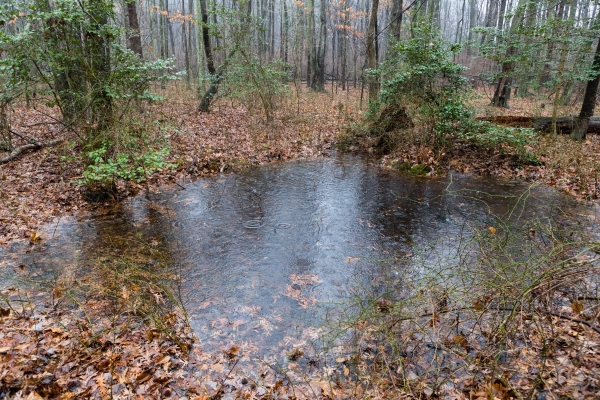They form in depressions in the forest floor and are large enough to last for a few months, but small enough that they tend to dry out by mid-summer. As a result, vernal pools have no fish in them. This lack of a key predator population makes them a perfect place for amphibians to breed.
Episode 327: Winter Wrens
While these birds are small and adorned with various subtle shades of brown and a pale eyebrow, they are anything but inconspicuous this time of year as males belt out long, beautiful songs that will stop you in your tracks.
Episode 326: Solar Eclipses
The next time Maine will experience a total solar eclipse will be 55 years from now, so this could be a once in a lifetime opportunity for many.
Episode 325: Common Goldeneye Courtship
It’s goldeneye courtship display season! And there are fourteen unique moves they do.
Episode 324: Elvers
Vast fyke nets stretched out across streams near the heads of tide right now are evidence of commercial fishing for elvers, young American eels.
Episode 323: Winter Nutrient Deficiency
Have you been feeling indifferent to the soups and stews that felt so right in the fall and winter and instead find yourself craving a fresh salad and some fruit?
Episode 322: Tannin Stains
You know it when you see it: at the base of a tree trunk, perhaps even several in an area, the snow is stained yellow—is it tree pee?
Episode 321: Voles
Voles are able to stay active in the winter, relying on stored food from the fall and also foraging food through the winter. When there’s a fluffy covering of snow, they thrive in the subnivean zone, that narrow space of warmer air between the surface of the ground and the snow cover, where they stay protected from the elements and from many predators.
Episode 320: Red-breasted Nuthatches
While red-breasted nuthatches are year-rounders here in Maine, on some winters when their food crop is low farther north, we may get even more of them from up north joining our populations.
Episode 319: Cusk Spawning
Also known as burbot, cusk are an oddity among our freshwater fish. Following canyon and valley-like topography in the bed of the lakes, cusk will migrate up out of the deep water into shallow sand and gravelly shoals to spawn in late February and early March.









